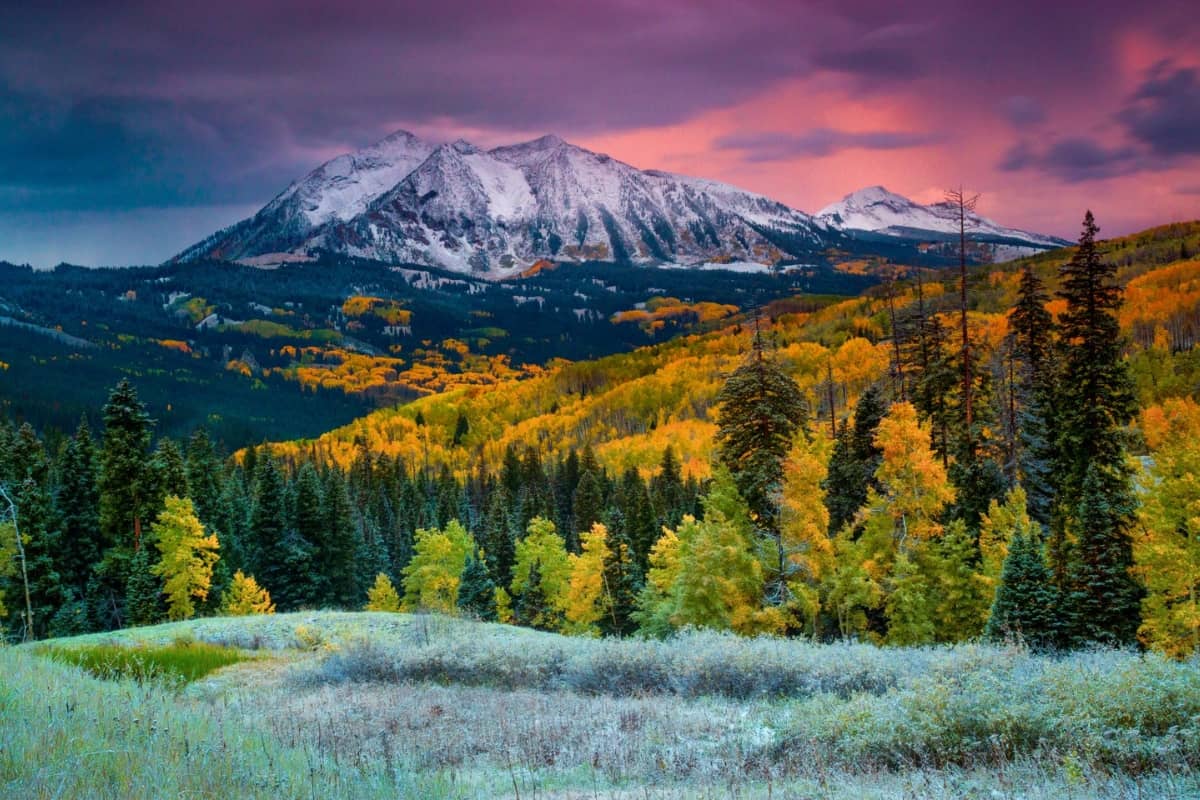Kebler Pass offers some of the most breathtaking fall foliage views in the world. As the leaves of the largest aspen grove in North America turn golden, thousands of visitors flock to the area each year to witness this spectacle. But beneath the beauty lie hidden dangers, especially in the fall when conditions can change rapidly. Knowing what to expect can help you make the most of your visit while staying safe.
Unpredictable Weather Conditions
Autumn in Kebler Pass brings significant fluctuations in weather. The elevation peaks at over 10,000 feet, which creates an environment where snow, rain, and freezing temperatures can emerge unexpectedly. Even during sunny fall days, conditions can shift dramatically by evening. Many visitors encounter muddy and slick roads after rainstorms, turning the gravel route into a treacherous journey. Driving these roads without a 4WD vehicle can result in difficulty controlling your vehicle, particularly on the steep inclines.
Preparing for these rapid weather changes means packing gear for multiple scenarios. Bringing proper rain gear, layered clothing for cold conditions, and durable shoes that can handle mud is essential for both hikers and sightseers. Carrying an emergency kit in your vehicle with a flashlight, blankets, food, and water is recommended, especially since there are long stretches without services along the route.
Crowded Roads and Traffic Hazards
The fame of Kebler Pass draws large crowds, especially during peak fall foliage season from mid-September to early October. While the dirt road that runs through the pass is scenic, it’s also narrow and can become congested, especially on weekends. Tourists frequently pull off to the side of the road to capture photos of the sweeping aspen groves, creating hazardous conditions for both drivers and pedestrians. Given the limited designated parking areas, impromptu stops can lead to accidents or blockages.
Moreover, as the area is a working road used by locals and other through traffic, it is vital to be mindful of where you stop. Drivers often get distracted by the scenery, and without proper pull-offs, this can create unsafe conditions. Staying alert and using designated pull-over areas will help avoid these dangers.
Wildlife Encounters
Kebler Pass is not only home to stunning aspen forests, but also to a variety of wildlife. Fall is a season when animals such as moose, deer, and even black bears are more active, foraging in preparation for the winter. While encountering wildlife can be a memorable experience, it also presents risks. Bears, for instance, might be drawn to food left unattended by campers or picnickers. It is important to store food properly and avoid feeding any wildlife.
When hiking or camping in the area, it is essential to follow wildlife safety guidelines. Make noise while hiking to alert animals of your presence, avoid approaching wildlife for photos, and carry bear spray if you are in more remote areas. In case of an encounter, giving wildlife space is crucial to prevent potential attacks or accidents.
Limited Cell Service and Emergency Communication
Kebler Pass is a remote mountain area, and as such, cell phone service is extremely limited or non-existent throughout much of the pass. In case of an emergency, this could make calling for help difficult. Visitors should not rely on cell phones or GPS apps for navigation or communication. It’s important to download maps and trail guides ahead of time and carry a physical map of the area.
Investing in a personal locator beacon or satellite communicator can be a lifesaver if you plan to venture deeper into the wilderness or hike the trails surrounding the pass. These devices allow you to call for help even in areas without service, providing an extra layer of security.
High-Altitude Hazards
The high elevation of Kebler Pass can pose challenges for those not accustomed to altitude. Altitude sickness is a real concern at elevations over 10,000 feet, and many visitors who are not acclimated can experience symptoms such as headaches, nausea, dizziness, or shortness of breath. Those planning to hike or explore the area at higher elevations should take it slow, stay hydrated, and be aware of their body’s response to the thinner air.
Preventing altitude sickness starts with proper preparation. Gradually increasing altitude before your visit helps the body acclimate. If symptoms become severe, descending to a lower elevation is often the best remedy. Overexerting yourself at altitude can also worsen symptoms, so pacing your activities and resting frequently is key.
Falling Leaves and Slick Roads
As autumn progresses, falling leaves can create additional hazards on the already challenging dirt roads of Kebler Pass. When wet, the leaves can make the roads even more slippery, increasing the chances of skidding, especially on downhill sections or around sharp curves. Drivers unfamiliar with the area may underestimate the impact of fallen leaves, leading to accidents.
Ensuring that your vehicle’s tires are in good condition and reducing speed on slick surfaces are essential safety measures. Braking gradually and maintaining a safe distance from other vehicles can also help prevent sliding on leaf-covered roads. Furthermore, carrying chains for your tires might be necessary if an early snowstorm occurs, as snow can quickly accumulate and mix with the leaves, creating even more dangerous driving conditions.
Conclusion
While Kebler Pass is undoubtedly one of Colorado’s most magnificent fall destinations, it is not without its risks. Unpredictable weather, crowded roads, wildlife encounters, limited communication options, high-altitude sickness, and slick roads all add layers of danger that can easily turn an awe-inspiring trip into a challenging experience. However, with proper preparation and a keen awareness of these potential hazards, visitors can enjoy the breathtaking beauty of Kebler Pass while minimizing risks.
Whether you’re visiting for the golden aspens, camping under the stars, or embarking on a scenic drive, taking precautions against these hidden dangers ensures a safe and enjoyable adventure in one of Colorado’s premier fall foliage locations.






